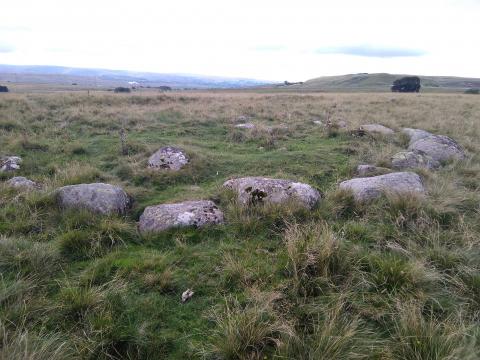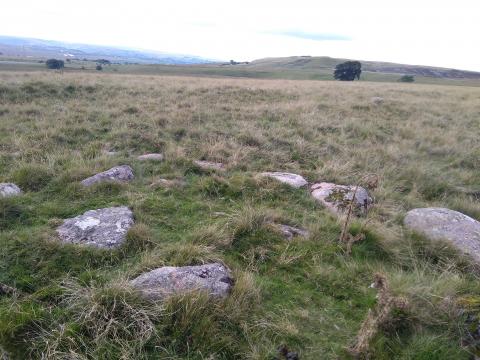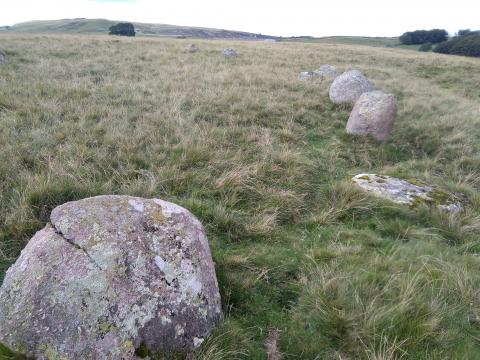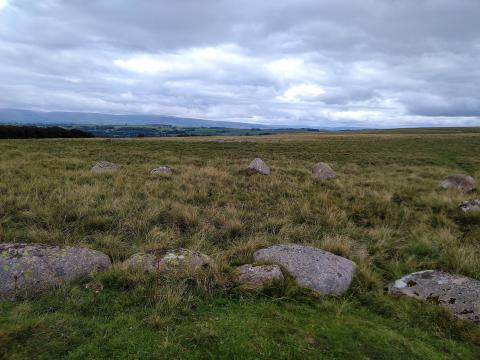Oddendale Stone Circle

This month I called at Oddendale stone circle, not far from Shap. It is built upon an escarpment of carboniferous limestone and includes an outer circle 26 metres in diameter made of 34 pink granite boulders and an inner circle 7.5 metres’ diameter of 23 smaller boulders of the same rock. Like all such ancient monuments, we have little idea of who built them and for what purpose. Many such monuments have disappeared through nature’s wear, deliberate human destruction or local entrepreneurs’ seeking ready sources of building materials.

J.S. Bland’s 1910 The Vale of Lyvennet draws attention to the similarity of this one's place name to the old Norse god who would have once been venerated in these parts. Odin may even have been worshipped amidst these stones; more lurid imaginations may even see sacrifices being offered. Yet the stones survive and Odin is banished from the realms of devotion, except in the minds of the writers and readers of fantasy fiction and delvers into historical lore. The stones show that the dale is no longer Odin’s, for though they remain and the etymology survives, the worshippers, priests and onlookers no longer attend. The old gods are gone for they are banished; the old gods are gone, for they never were.

Having returned from a tour of Lincolnshire churches, whose attendance might be even lower than the visitors seeking this circle, one might think the same could be said of the Christian God as I have just said of Odin. Although gloomy secularism suffocates the land, the God of heaven still has hundreds of thousands of people in this nation. Though the gates of hades would assault the Church of Christ, spitefully closing the meeting places and chapels the world over, many continue to grow, to multiply and flourish. Old gods come and go, new religions wax and wane, but the Gospel of grace, first proclaimed in Eden and shared until the end of the age, will never be extinguished, only to be preserved in dim memories, place names and piles of old stones.

- Log in to post comments


 Sunday Worship 10.45am & 6.00pm
Sunday Worship 10.45am & 6.00pm